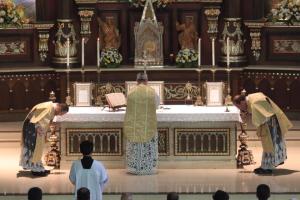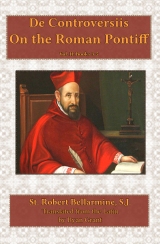
The 2nd Confiteor
In Traditional circles there is a lot of debate that swirls around the so-called “2nd confiteor”, which is said immediately after the priest receives communion in the missals preceding 1962. It was removed with the 2nd revising of the rubrics in 1961 (published in 1962), which became what we call today as the “1962 Missal”. There have been a lot of debates over whether it should be done since it is part of the “perennial tradition”, (which actually its not, but we’ll get to that), while others say it is not in the rubrics, so it shouldn’t be done.
Amongst Traditionalist groups, the SSPX has always maintained it, so far as I know. The FSSP actually has permission to use it, on the basis of using the earlier publication of rubrics in 1961, which in consequence would not allow them to use the second revision, which inserted St. Joseph into the Canon. Except for special permission which they possess. I’ve been told that the Institute of Christ the king uses both, but I’ve never been to their Masses and I don’t know their situation. Diocesan clergy who say the Traditional Mass, so far as I know, vary in terms of who does it and who doesn’t, but strictly on the level of permissions they can do the second confiteor, or they can use St. Joseph in the canon, but not both. On the level of tradition they should, and we shall see why.
Some argue that the second confiteor should be removed because it is redundant. We already said it after all, we’re sorry! Really! On the other hand, those who argue it should be said, say that it is used to remit any venial sins one might have committed during the Mass, as well as imperfections. This is true, but only to a point.
The reality is, that at most Masses throughout the year, prior to the time of St. Pius X, would not have had a second confiteor at all. The historic practice of the Latin church was always to administer communion outside of Mass. This means that after the priest received communion, the deacon and subdeacon would prepare the ablutions and move the missal and chalice veil, just as a server does at a private low Mass where he does not receive communion. This had a number of advantages. If you felt you were not in a state to receive communion, you could duck out with a number of other people, and you didn’t have the specter of the old ladies staring you down, wondering “What did you do!”, so there wasn’t a perceived “pressure” to receive. In terms of the smoothness of Mass itself there are some benefits. After Mass, the priest would come out in a surplice with a stole, and distribute Holy Communion from the tabernacle, beginning with the confiteor, misereatur, and indulgentiam, and then the Ecce Agnus Dei, then as normal. Thus, the rite the Church used for the reception of Communion outside of Mass included the confiteor, both as a testament to true devotion and sorrow for sins in the communicant, and to make reparation for their venial sins. On two days of the year, however, the communion rite took place during Mass, namely Maundy Thursday and Corpus Christi. On those days, communion would take place just as it does at solemn Masses today.
What St. Pius X directed, was for communion to take place during Mass as a definitive practice, and the older practice an exception to the rule. This brought into being the practices that Catholics are familiar with today, of the second confiteor, being sung by the deacon, or said by the server outside of Solemn Mass. The reason is, no one left Mass early, and if Communion took place during Mass on a regular basis, it would aid the people in exercising the practice of more frequent Communion.
The problem today then, is not the second confiteor, far too much attention goes to that subject, it is people receiving communion who do not first go to confession, even in Traditionalist circles. We have, largely, the opposite problem that St. Pius X tried to address, which was Jansenism, we have instead, the problem of a false concept of mercy, by which men imagine God will forgive them, and they’re good people, so why not receive communion. While St. Pius X’s goals were laudable, at the same time, they were for a different culture. Today we have the scandalous problem of sacrilegious communions. Thus, what should be considered, is whether or not to move communion once again outside of Mass, combined with increasing confessions and preaching Missions, or conferences, or whatever you like on good preparation for the reception of Holy Communion. This would seem a more fitting discussion on rubrical fights over whether the second confiteor should or should not be said.
Update: I had to correct the earlier article after being advised by a priest in the know that the FSSP actually does have permission to do both, where formerly I had written they do not.
 Today I was a guest on the Mike Church Show to talk about the myths surrounding Luther and the beginning of the “Reformation” and the Catholic reformers that began before Luther even appeared on the scene; so that Luther’s revolt was not due to abuses in the Church, but errors in theology that he embraced.
Today I was a guest on the Mike Church Show to talk about the myths surrounding Luther and the beginning of the “Reformation” and the Catholic reformers that began before Luther even appeared on the scene; so that Luther’s revolt was not due to abuses in the Church, but errors in theology that he embraced.





 On 23 March I was on
On 23 March I was on 


